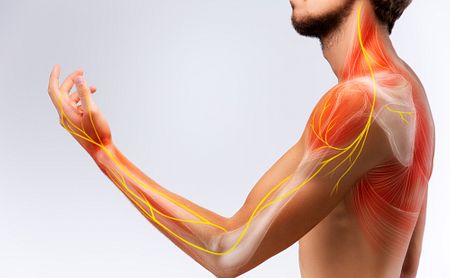Acupuncture Might Work Better Than TENS to Reduce Chronic Joint Pain

Acupuncture was found to be more effective for reducing chronic joint pain in hemophilia patients than transcutaneous electrical nerve stimulation, or TENS, the results from a small clinical trial show.
The study, “Acupuncture as a therapeutic resource for treatment of chronic pain in people with haemophilia,” was published in the journal Haemophilia.
Joint bleeding is one of the most common clinical manifestations of hemophilia, affecting 70–80% of people with the disease. This symptom can result in permanent joint disease, called hemophilic arthropathy, as well as chronic pain and lower quality of life.
When administered at younger ages, replacement therapy — a treatment that supplies patients with the missing blood clotting factor — can help to lessen later symptoms. However, without it, adult hemophilia patients can have chronic hemophilic arthropathy in several joints.
Physiotherapy, which often involves tailored exercises and physical therapy, is a standard treatment for chronic pain in hemophilia. TENS, which can be used with physiotherapy, involves a mild electric current applied to the skin to achieve pain relief in a specific area. These small electrical impulses, which patients usually feel as a tingling sensation, can reduce the pain signals going to the spinal cord and brain, which may help relieve pain and relax muscles. The therapy also may stimulate the production of endorphins, the body’s natural painkillers.
While TENS and other physiotherapy treatments are known to ease arthropathy symptoms, persistent pain makes people with hemophilia look for alternative treatments. One such treatment, acupuncture, uses needles in defined “energy points” along with heat or an electric current.
Now, researchers at the University of Campinas, in Brazil, led a clinical trial involving 28 patients to assess the therapeutic effect of acupuncture in comparison with TENS.
In total, 15 adults with hemophilia were included in the acupuncture group and 13 in the TENS group.
Acupuncture was performed on the side of the patient’s body with the most intense pain. In turn, TENS was applied to the most painful joint for 20 minutes. Both treatments were conducted by a physiotherapist weekly in 20-minute sessions, over five consecutive sessions.
The patients’ weight and height were similar between the two groups. However, the participants in the acupuncture group were older than those receiving TENS — 43.3 years vs. 32.8 years.
Initial scores for pain, using a visual analog scale or VAS, were similar between the two groups, as were quality of life and joint health measures, as analyzed with the Hemophilia Joint Health Score. Notably, quality of life was assessed with a questionnaire that measures domains such as physical health, treatment, work and school, coping strategies, family planning, and relationships/sexuality. No bleeding episodes were reported in either group.
The results showed that the acupuncture group had a 60.71% reduction in the pain score, but the mean VAS score was significantly reduced in both groups following treatment.
In the acupuncture group, the team found that the decrease in pain was particularly significant from the fourth to the fifth session. For these patients, a significant improvement was found in seven quality of life domains, specifically physical health, “how you felt,” the “way you see yourself,” sports and leisure, treatment, future, and family planning. Meanwhile, only two domains —work and school, and treatment — showed significant improvements in the TENS group.
A significant difference in satisfaction levels was observed in comparing the two groups. Most participants receiving acupuncture (93.3%) reported that they were “satisfied” with the treatment, while a lower percentage (30.8%) said they were “slightly satisfied” with TENS. No differences were seen in negative impacts on quality of life and joint health between the two approaches.
“Acupuncture was effective in reducing pain intensity in haemophilia patients with chronic joint disease when compared to TENS,” the researchers concluded.
Among the study’s limitations, the researchers noted, were the different age of patients in the two groups and the lack of other pain measures.






